Sixteen castles in 4 days along the Welsh Marches- (136 miles)
With some 400 castles in Wales (of which over 100 are still standing) and hundreds more in England and Scotland, I made a small homage to visit some. I started in my home town in South Wales and travelled North up the Welsh Marches (the marches are an imprecisely defined area along and around the border between England and Wales).
Day 1- Newport to Crickhowel (39 miles)
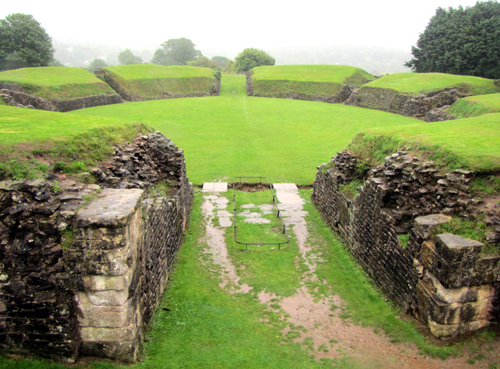 We start at Newport castle and proceed to Caerleon along a dedicated cycle path that follows the river
Usk. Caerleon is steeped in Roman history and one can easily spend half a day here, but not today. We
cross the Usk on a 200 year stone bridge and turned left at the Bell Inn onto the Bulmore road, the Inn
dates back to the 17th century and was later a busy coaching inn. In 2002 a metal-detectorist, scouring
the woodlands above the Bell Inn, discovered 40 ancient coins of silver. Just hidden from view on the
Bulmore road is Clawdd house, designed in the style of a French chateau, it was one of the finest Edwardian
houses of its type in the area, now derelict. We continue along the Bulmore road which follows the course
of the river Usk and is therefore fairly easy going. The road goes right through the colossal Celtic manor
golf resort.
We start at Newport castle and proceed to Caerleon along a dedicated cycle path that follows the river
Usk. Caerleon is steeped in Roman history and one can easily spend half a day here, but not today. We
cross the Usk on a 200 year stone bridge and turned left at the Bell Inn onto the Bulmore road, the Inn
dates back to the 17th century and was later a busy coaching inn. In 2002 a metal-detectorist, scouring
the woodlands above the Bell Inn, discovered 40 ancient coins of silver. Just hidden from view on the
Bulmore road is Clawdd house, designed in the style of a French chateau, it was one of the finest Edwardian
houses of its type in the area, now derelict. We continue along the Bulmore road which follows the course
of the river Usk and is therefore fairly easy going. The road goes right through the colossal Celtic manor
golf resort.
Entering the town of Usk about 10 miles later is the second castle today, Usk was founded by the Romans and there’s been a river crossing here since. I couldn’t resist just riding along the Usk to the old station bridge and tunnel, now a small cycle path. Just before visiting the castle I had a cup of tea in the chippy on the main street. There are two ways from here to Raglan (our next stop), up Gwelog hill or the flatter route passing Raglan gliding club and left towards Kingcoed to arrive at the third castle of the day; Raglan. On leaving the castle head towards Abergavenny on the A40, but turn right at the first roundabout and take the Clytha road to Abergavenny, the A40 dual carriageway is far too dangerous to cycle along. At Raglan garden centre is the Sugerloaf cafe, another perfect stop for tea. There are a few pubs along this route if you’re feeling thirsty.
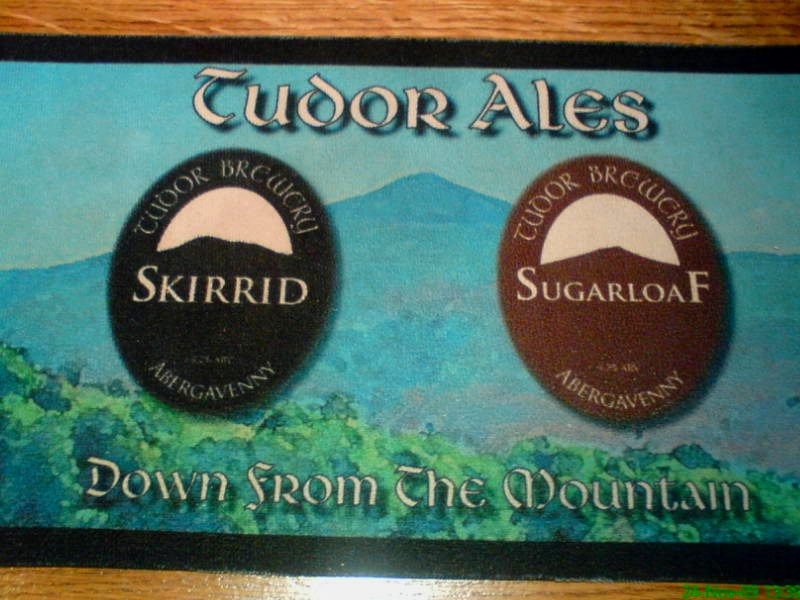 Take care crossing the roundabout into Abergavenny near the heads of the valleys road. We’re now
into Abergavenny and the fourth castle of the day. Abergavenny is promoted as the "Gateway to Wales".
Situated at the confluence of a tributary stream, the Gavenny, and the River Usk, it is almost
surrounded by two mountains; the Skirrid and the Sugar Loaf, you can even drink them; the town’s
own micro-brewery has named its ales after them. This popular town has various farmers’ food festivals
which attract visitors from around the world. Out of Abergavenny take the A40 to climb gently towards
Crickhowell, but take care it’s a busy road. Crickhowell is taken from the name of a nearby Iron Age
hill fort of Crug Hywel above the town. Crickhowell is our last castle today and a stop for the night
snuggling between the Black Mountains and Brecon Beacons, in arguably the most beautiful valley in
this National Park. I stayed at Riverside campsite, a 5 minute walk to the town centre. I ate at
the Bear inn; beef lasagne with salad and chips, a bit pricy
at £13, but nice.
Take care crossing the roundabout into Abergavenny near the heads of the valleys road. We’re now
into Abergavenny and the fourth castle of the day. Abergavenny is promoted as the "Gateway to Wales".
Situated at the confluence of a tributary stream, the Gavenny, and the River Usk, it is almost
surrounded by two mountains; the Skirrid and the Sugar Loaf, you can even drink them; the town’s
own micro-brewery has named its ales after them. This popular town has various farmers’ food festivals
which attract visitors from around the world. Out of Abergavenny take the A40 to climb gently towards
Crickhowell, but take care it’s a busy road. Crickhowell is taken from the name of a nearby Iron Age
hill fort of Crug Hywel above the town. Crickhowell is our last castle today and a stop for the night
snuggling between the Black Mountains and Brecon Beacons, in arguably the most beautiful valley in
this National Park. I stayed at Riverside campsite, a 5 minute walk to the town centre. I ate at
the Bear inn; beef lasagne with salad and chips, a bit pricy
at £13, but nice.
Day 2- Crickhowell to Hay-on-Wye (33 miles)
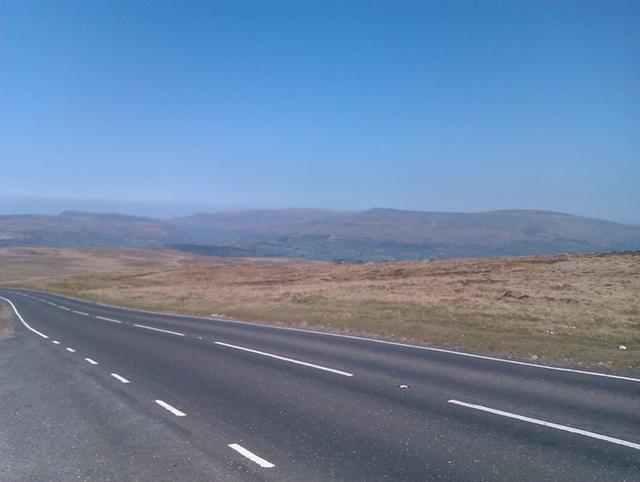 We cross the river from Crickhowell and travel North West on the B4558 towards Llangynidr climbing through
dense green woods. The village of Llangynidr stands beneath the mighty Llangynidr mountain
which has seen many high profile cycle races ascend it to Ebbw vale. Nelson cycles are
based here making handmade frames since the late seventies. Just outside the village
we can follow the Mon & Brecon canal for a few miles before jumping back on the B4558
towards Talybont-on-Usk where again, I couldn’t resist visiting a remnant of the Brecon and
Merthyr Tydfil Junction Railway, the station is now a private dwelling. Just through the village
is Talybont store which has a nice cafe, a welcome break after twenty miles.
We cross the river from Crickhowell and travel North West on the B4558 towards Llangynidr climbing through
dense green woods. The village of Llangynidr stands beneath the mighty Llangynidr mountain
which has seen many high profile cycle races ascend it to Ebbw vale. Nelson cycles are
based here making handmade frames since the late seventies. Just outside the village
we can follow the Mon & Brecon canal for a few miles before jumping back on the B4558
towards Talybont-on-Usk where again, I couldn’t resist visiting a remnant of the Brecon and
Merthyr Tydfil Junction Railway, the station is now a private dwelling. Just through the village
is Talybont store which has a nice cafe, a welcome break after twenty miles.
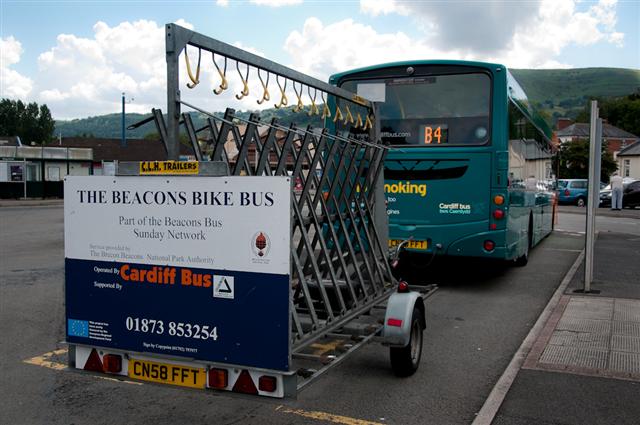 We travel through Pencilli which did have a castle (now a couple of stones), but technically
this is the first castle of the day. Shortly after, we arrive at Brecon and the second castle
of the day, though this one is attached to a hotel, it's still worth a look. There is a
bike bus that leaves Cardiff throughout the summer straight to Brecon. The east end of town has two military
establishments; the Infantry Battle School and home to 160th (Wales) Brigade, and the
Ghurkha Company (Mandalay). Brecon is famous for an annual jazz festival. There’s plenty of
cafes for a cupa. Out of Brecon we travel east on the National cycle route eight climbing
We travel through Pencilli which did have a castle (now a couple of stones), but technically
this is the first castle of the day. Shortly after, we arrive at Brecon and the second castle
of the day, though this one is attached to a hotel, it's still worth a look. There is a
bike bus that leaves Cardiff throughout the summer straight to Brecon. The east end of town has two military
establishments; the Infantry Battle School and home to 160th (Wales) Brigade, and the
Ghurkha Company (Mandalay). Brecon is famous for an annual jazz festival. There’s plenty of
cafes for a cupa. Out of Brecon we travel east on the National cycle route eight climbing
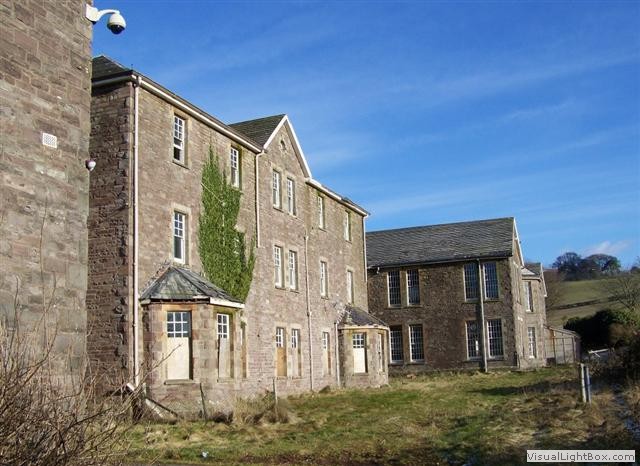 towards Drostre and the village of Llanfilo where there’s a 14th century church with definate
links to an earlier church on the site. After a stroll around the church, we divert back onto
the A438 into Bronllys for our third castle and a bonus; a former pauper and lunatic asylum at
Bronllys hospital, services at the hospital were wound down during the 1990s and the last wards
closed in 1999, but the derelict buildings still remain.
towards Drostre and the village of Llanfilo where there’s a 14th century church with definate
links to an earlier church on the site. After a stroll around the church, we divert back onto
the A438 into Bronllys for our third castle and a bonus; a former pauper and lunatic asylum at
Bronllys hospital, services at the hospital were wound down during the 1990s and the last wards
closed in 1999, but the derelict buildings still remain.
I rode through the pretty Roman town of Talgarth, but it has a sinister side; the A479 leading to Talgarth is a motorcycle haven with its sweeping bends and good surface, but it is known as Death Valley because of the amount of motorcycle fatalities on the road each year. It’s on to Hay-on-Wye often described as ‘the town of books’, it is the National book town of Wales and hosts an annual major literary festival; the Hay Festival. There are more than thirty bookstores, specializing in out of print or hard to locate titles. As for hay, it’s said the river Wye meanders through the town like an old man. It’s here I’m staying for the second night at Racquety Farm campsite, back over the river there is a fine selection of restaurants and pubs selling food.
Day 3- Hay-on-Wye to Clun (34 miles)
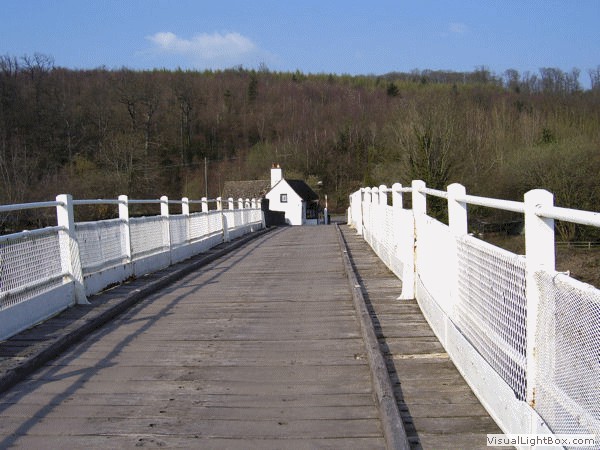 Out of Hay I'm heading north east on the B4350 now in England heading towards Clifford where we pass our first
castle of the day. I cross the river Wye on an old wooden toll bridge and turn right on the A438 for a
short while before turning left into lanes. Through Kington (not to be confused with Knighton) it’s
the second castle of the day then back across the border through Presteigne then back across the
border again back into England, all 400 yards of Wales. Presteigne lies on a small Welsh spit of
land within a boundary of two brooks which converge in a ‘V’ shape about half a mile from Presteigne.
Once back in England, I'm on a road that is the actual border with one side of the road
being in Wales and the other pavement in England.
Out of Hay I'm heading north east on the B4350 now in England heading towards Clifford where we pass our first
castle of the day. I cross the river Wye on an old wooden toll bridge and turn right on the A438 for a
short while before turning left into lanes. Through Kington (not to be confused with Knighton) it’s
the second castle of the day then back across the border through Presteigne then back across the
border again back into England, all 400 yards of Wales. Presteigne lies on a small Welsh spit of
land within a boundary of two brooks which converge in a ‘V’ shape about half a mile from Presteigne.
Once back in England, I'm on a road that is the actual border with one side of the road
being in Wales and the other pavement in England.
It’s time for coffee again and as if by magic we appear in Knighton (the Trans Cambrian ride starts in Knighton, click here to read about it). Lying on the River Teme, the town straddles the English-Welsh border, Knighton is known for its well preserved section of Offa's Dyke and has two earthwork castle foundations, no stone buildings remain, but it still qualifies as two more castles. Out of Knighton we soon cross Offa’s dyke path and end up on a splendid lane with fantastic views before entering Clun. Clun is located in the Shropshire hills an 'area of outstanding natural beauty', it's our last castle of the day and the end of day three. I’m staying at Clun Mill which is located to the north of the town and is nicknamed the ‘malevolent mill’ on account of numerous deaths having been recorded there and occupants disappearing after purchasing it. Last used as a mill around 1920, it opened as a youth hostel in 1932. The beautifully restored water mill has much of the old machinery in place. They also allow camping, using the same facilities as the hostellers.
Day 4- Clun to Welshpool (30 miles)
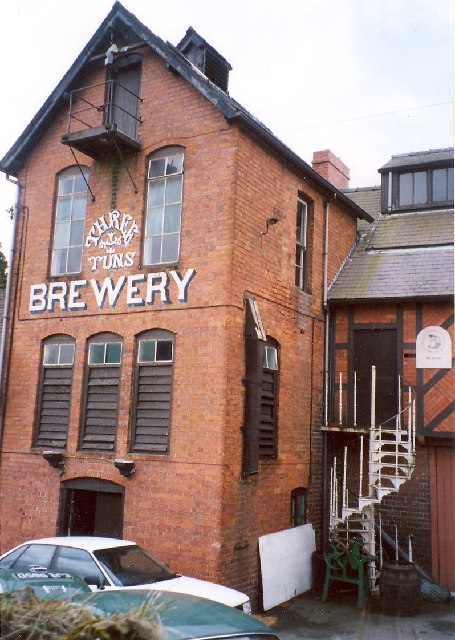 This is the last leg of this journey, we turn left out of the hostel and keep to the left on the
B4368 to Clunton. This is the county of Shropshire with rolling green hills, it is simply breathtaking
especially on a fresh morning as today. Each little village has its own character always with a chapel
and sometimes a pub. Bishop's Castle is a small market town with a charm all of its own, there are many
small market towns on the marches border, built around the drover trade whereby Welsh farmers would
shepherd sheep into the small towns for sale. The town has two micro-breweries, including the Three
Tuns, the UK's oldest brewery. There are many half timbered Elizabethan houses in the town, but it
no-longer has a castle as it was flattened in the 17th century, many of the town’s buildings stand
on its foundations, so in theory is the first castle of the day.
This is the last leg of this journey, we turn left out of the hostel and keep to the left on the
B4368 to Clunton. This is the county of Shropshire with rolling green hills, it is simply breathtaking
especially on a fresh morning as today. Each little village has its own character always with a chapel
and sometimes a pub. Bishop's Castle is a small market town with a charm all of its own, there are many
small market towns on the marches border, built around the drover trade whereby Welsh farmers would
shepherd sheep into the small towns for sale. The town has two micro-breweries, including the Three
Tuns, the UK's oldest brewery. There are many half timbered Elizabethan houses in the town, but it
no-longer has a castle as it was flattened in the 17th century, many of the town’s buildings stand
on its foundations, so in theory is the first castle of the day.
Near Pentreheyling there’s a fantastic example of a gatehouse lodge belonging to Mellington Hall. It’s not long before the second castle of the day at Montgomery. Originally a walled town, the main streets still follow the original mediaeval pattern with an array of interesting historic buildings. One would have thought Montgomery would be in Montgomeryshire, but it’s still in Shropshire. I had some tea and toast in the Castle Kitchen, this is an excellent local coffee shop which serves imaginative, delicious, home cooked food.
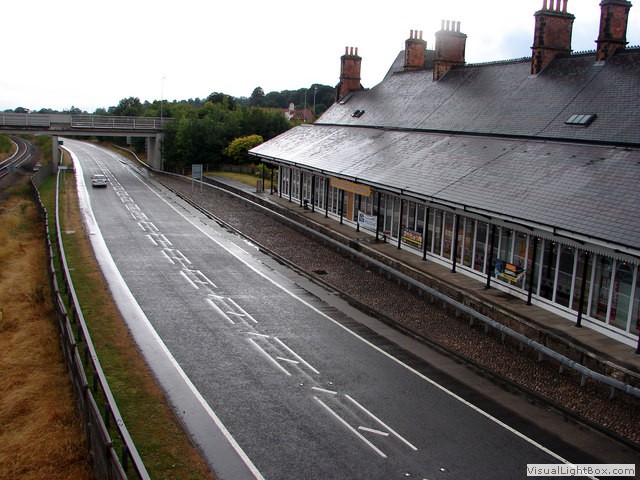 At Kingswood we turn right continuing on the B4388 and through Leighton where we turn left
onto the B4381 and into Welshpool. This has the last castle on the journey, one can see it high
on a hill from the town, but I haven’t got time to visit it, the images are stock. I had a shower
at the 'Flash' leisure centre and returned to the station for the train home. The station now
isn’t where the original one was, just across the road was old station built in 1860, the tracks were
redirected in the 1920’s to make way for the new road. The old station is now a craft shopping centre.
At Kingswood we turn right continuing on the B4388 and through Leighton where we turn left
onto the B4381 and into Welshpool. This has the last castle on the journey, one can see it high
on a hill from the town, but I haven’t got time to visit it, the images are stock. I had a shower
at the 'Flash' leisure centre and returned to the station for the train home. The station now
isn’t where the original one was, just across the road was old station built in 1860, the tracks were
redirected in the 1920’s to make way for the new road. The old station is now a craft shopping centre.
A lovely ride in April with fair weather, though far from flat, it undulates along the border between England and Wales. There are some quiet drover roads where welsh farmers crossed into England to the cattle markets, but we went on busy ‘A’ roads too. It was a pleasant few days and I would have liked more time to go all the way to north Wales.
-
Gallery
 Why not have a look at the gallery relating to this ride. Click the image or the title.
Why not have a look at the gallery relating to this ride. Click the image or the title. -
Newport castle
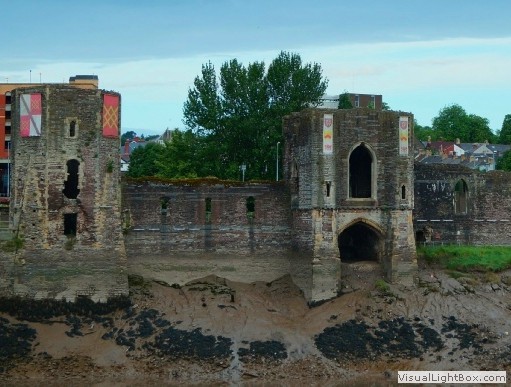 It was built in the 14th century, and held a garrison with the purpose of managing the crossing
of the River Usk and collecting local taxes. It was raided by Owain GlyndŵrIn 1402 and was later used in
19th century, the buildings within the ruin were used as a tannery and later as a brewery.
It was built in the 14th century, and held a garrison with the purpose of managing the crossing
of the River Usk and collecting local taxes. It was raided by Owain GlyndŵrIn 1402 and was later used in
19th century, the buildings within the ruin were used as a tannery and later as a brewery. -
Usk castle
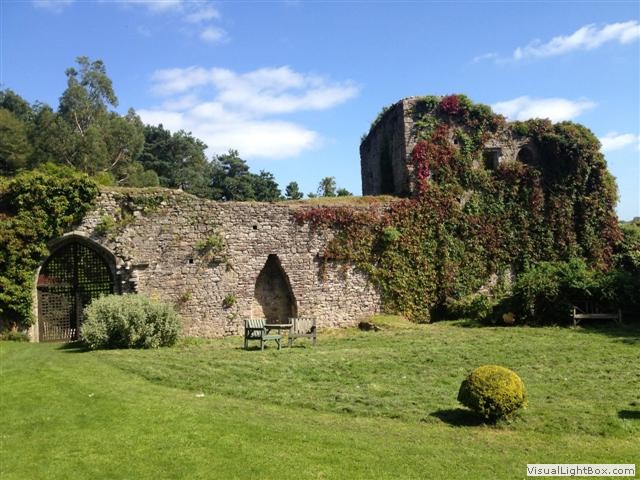 Standing on a hill overlooking the town of Usk, on a site already used for many centuries to
guard the river crossing, the castle was first mentioned in 1138, and the Norman gatehouse was
probably built in the 1200's by the de Clare family. Today it’s a private residence of the Humphreys
family, but you can still visit.
Standing on a hill overlooking the town of Usk, on a site already used for many centuries to
guard the river crossing, the castle was first mentioned in 1138, and the Norman gatehouse was
probably built in the 1200's by the de Clare family. Today it’s a private residence of the Humphreys
family, but you can still visit. -
Raglan castle
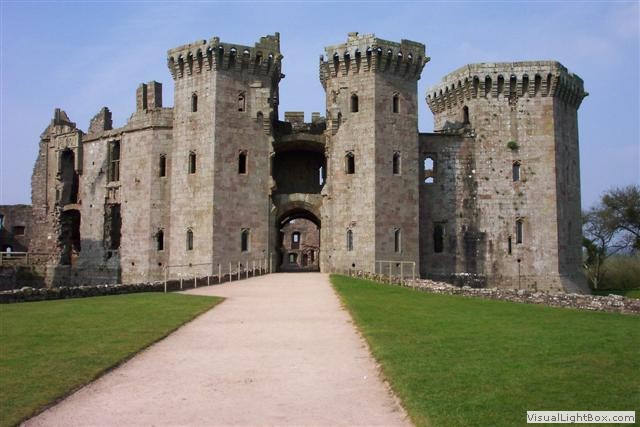 A modern castle by medieval standards, with its great multi-angular towers and Tudor-styling, it is
unlike any other castle in Wales and is truly a magnificent visual spectacle equal to any of the
classical castles in Wales.
A modern castle by medieval standards, with its great multi-angular towers and Tudor-styling, it is
unlike any other castle in Wales and is truly a magnificent visual spectacle equal to any of the
classical castles in Wales. -
Abergavenny castle
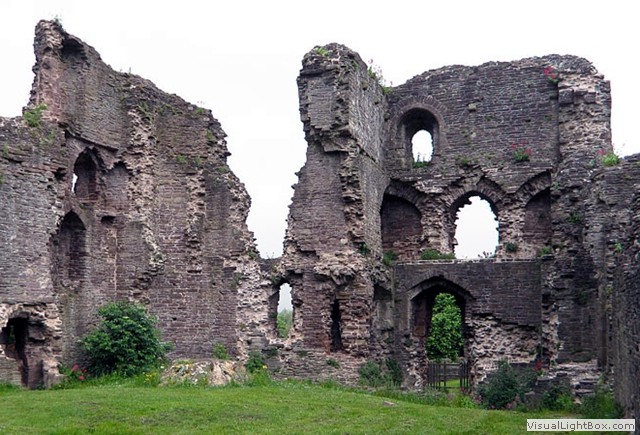 This was the site of a massacre of Welsh noblemen in 1175, and was attacked during the early 15th
century by the Glyndŵr Rising. It’s said that more than any other castle in Wales, Abergavenny is
been stained with the infamy of treachery.
This was the site of a massacre of Welsh noblemen in 1175, and was attacked during the early 15th
century by the Glyndŵr Rising. It’s said that more than any other castle in Wales, Abergavenny is
been stained with the infamy of treachery. -
Crickhowell castle
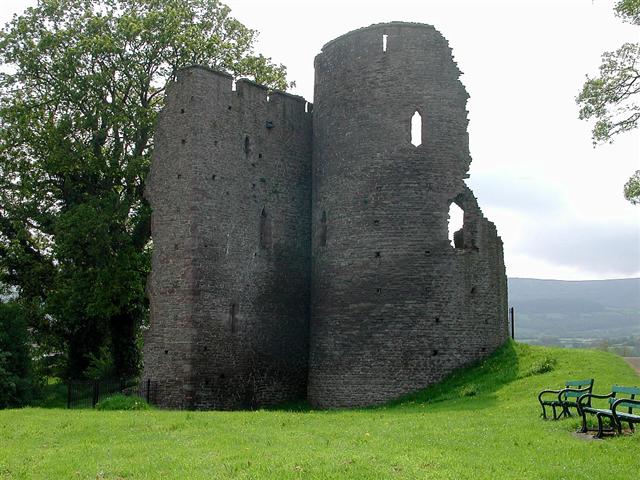 Crickhowell Castle, also known as Alisby's castle, is a conspicuous feature of the small
market town and occupies a vantage point with commanding views along the Usk valley. It began
life as a motte and bailey with timber buildings, probably built by the Turberville family in
the 12th century.
Crickhowell Castle, also known as Alisby's castle, is a conspicuous feature of the small
market town and occupies a vantage point with commanding views along the Usk valley. It began
life as a motte and bailey with timber buildings, probably built by the Turberville family in
the 12th century. -
Brecon castle
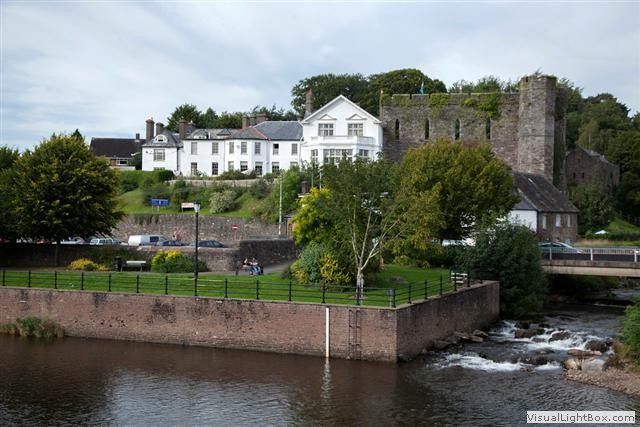 The Normans built hundreds of castles in the two centuries after 1066. In almost all cases
they started as timber buildings. But the more important were enlarged and strengthened and
this occurred at Brecon. The castle soon became the administrative and military headquarters
of the great Lordship of Brecon. What’s left of the castle (with its adjoining priory) is connected
to the Brecon castle hotel.
The Normans built hundreds of castles in the two centuries after 1066. In almost all cases
they started as timber buildings. But the more important were enlarged and strengthened and
this occurred at Brecon. The castle soon became the administrative and military headquarters
of the great Lordship of Brecon. What’s left of the castle (with its adjoining priory) is connected
to the Brecon castle hotel. -
Brollys castle
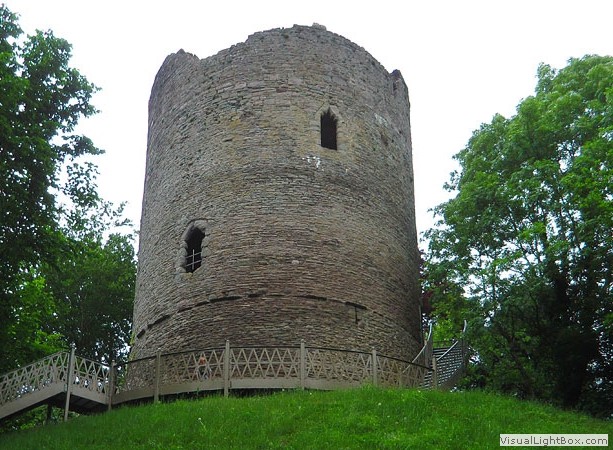 Though camouflaged by leafy hedges a tall stone cylinder leaps into your peripheral vision,
Bronllys Castle resolutely guards the roadside, towering ominously next to the gateway into the
medieval stronghold.
Though camouflaged by leafy hedges a tall stone cylinder leaps into your peripheral vision,
Bronllys Castle resolutely guards the roadside, towering ominously next to the gateway into the
medieval stronghold. -
Hay-on-Wye castle
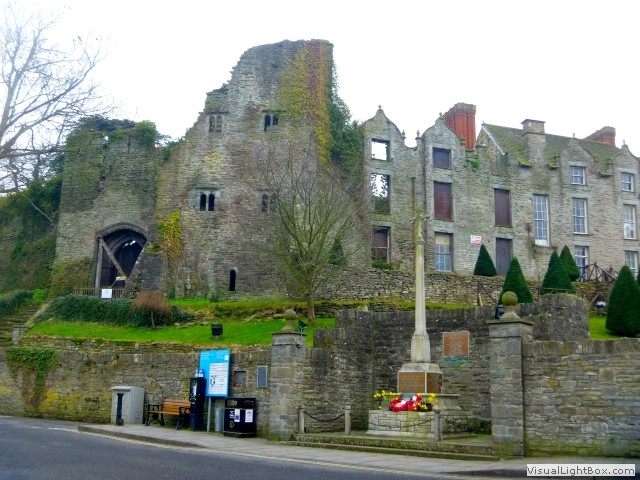 Once a great medieval stronghold, part Norman, part Jacobean, and part Victorian, Hay Castle
has been a home to many invaders who all added their own charm.
Once a great medieval stronghold, part Norman, part Jacobean, and part Victorian, Hay Castle
has been a home to many invaders who all added their own charm. -
Cliffod castle
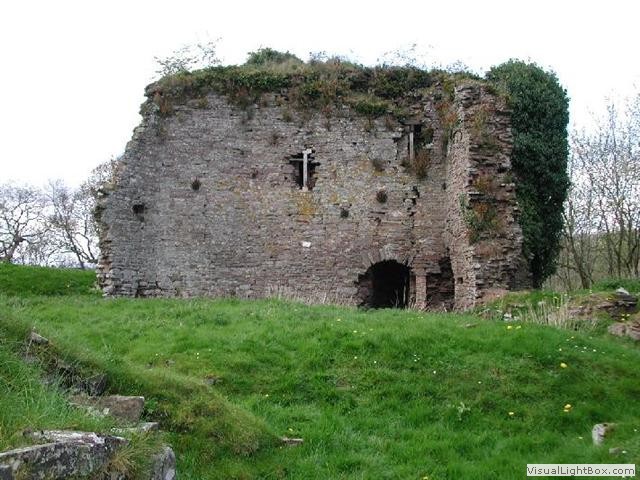 The castle was intended to provide protection for a planned Norman settlement above the River
Wye of quite a substantial size, with 200 plots being intended, running uphill for half a mile
towards Llanfair.
The castle was intended to provide protection for a planned Norman settlement above the River
Wye of quite a substantial size, with 200 plots being intended, running uphill for half a mile
towards Llanfair. -
Clun castle
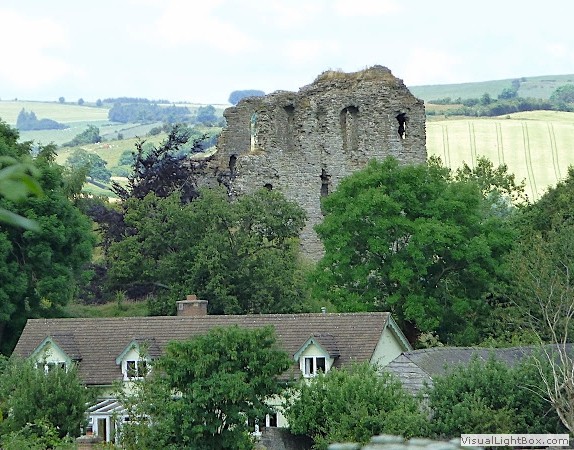 The dramatic riverside ruins and extensive earthworks of this Welsh border castle sit high on
a rocky mound on the edge of the small, picturesque town of the same name.
The dramatic riverside ruins and extensive earthworks of this Welsh border castle sit high on
a rocky mound on the edge of the small, picturesque town of the same name. -
Bishops castle
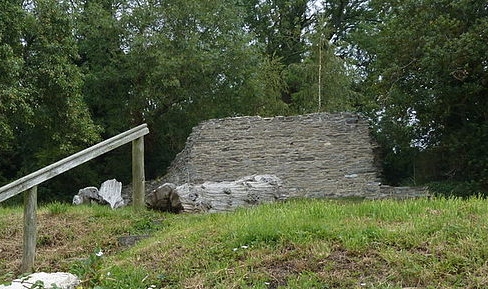 Just a small piece of bailey, not very impressive, but I suppose that depends on your point of
view, but a lot of the towns buildings are built on the castle foundations
Just a small piece of bailey, not very impressive, but I suppose that depends on your point of
view, but a lot of the towns buildings are built on the castle foundations -
Montgomery castle
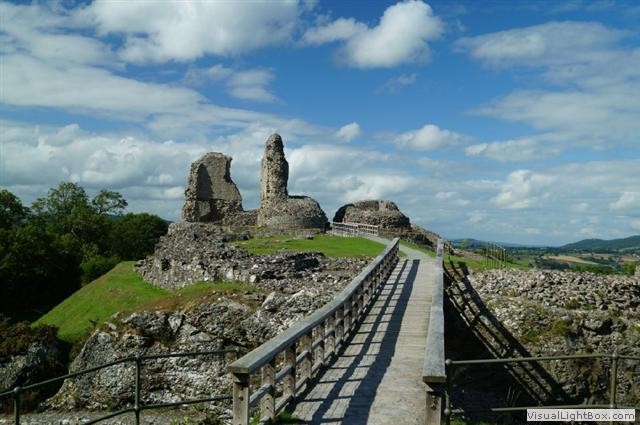 Sited, on a steep rocky ridge running north-south, it reflected changing military fashion. It
has spectacular views of the Severn Crossing at Rhydwhyman. After an unsuccessful attack by
Prince Llywelyn ab Iorwerth in 1228, the middle and outer wards were added to the castle. The
castle was again attacked in 1233, which resulted in damage to the well tower, which had to be
subsequently repaired and re-roofed.
Sited, on a steep rocky ridge running north-south, it reflected changing military fashion. It
has spectacular views of the Severn Crossing at Rhydwhyman. After an unsuccessful attack by
Prince Llywelyn ab Iorwerth in 1228, the middle and outer wards were added to the castle. The
castle was again attacked in 1233, which resulted in damage to the well tower, which had to be
subsequently repaired and re-roofed. -
Powis (Welshpool) castle
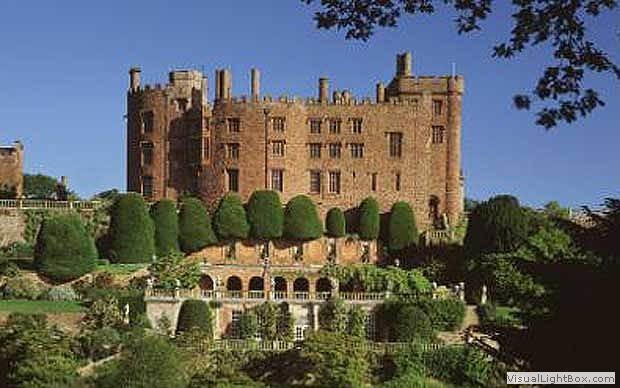 Most of the great Welsh castles were all built by the English to subdue the Welsh, and allowed to
decay when the medieval wars ended, but Powis survives as a captivating example of a military
stronghold which was preserved and renewed by continual occupation including a dynasty of Welsh
princes. As a modern addition a great deal of work was done to restore and improve the gardens in
the early 20th century.
Most of the great Welsh castles were all built by the English to subdue the Welsh, and allowed to
decay when the medieval wars ended, but Powis survives as a captivating example of a military
stronghold which was preserved and renewed by continual occupation including a dynasty of Welsh
princes. As a modern addition a great deal of work was done to restore and improve the gardens in
the early 20th century.

 It was built in the 14th century, and held a garrison with the purpose of managing the crossing
of the River Usk and collecting local taxes. It was raided by Owain GlyndŵrIn 1402 and was later used in
19th century, the buildings within the ruin were used as a tannery and later as a brewery.
It was built in the 14th century, and held a garrison with the purpose of managing the crossing
of the River Usk and collecting local taxes. It was raided by Owain GlyndŵrIn 1402 and was later used in
19th century, the buildings within the ruin were used as a tannery and later as a brewery. Standing on a hill overlooking the town of Usk, on a site already used for many centuries to
guard the river crossing, the castle was first mentioned in 1138, and the Norman gatehouse was
probably built in the 1200's by the de Clare family. Today it’s a private residence of the Humphreys
family, but you can still visit.
Standing on a hill overlooking the town of Usk, on a site already used for many centuries to
guard the river crossing, the castle was first mentioned in 1138, and the Norman gatehouse was
probably built in the 1200's by the de Clare family. Today it’s a private residence of the Humphreys
family, but you can still visit. A modern castle by medieval standards, with its great multi-angular towers and Tudor-styling, it is
unlike any other castle in Wales and is truly a magnificent visual spectacle equal to any of the
classical castles in Wales.
A modern castle by medieval standards, with its great multi-angular towers and Tudor-styling, it is
unlike any other castle in Wales and is truly a magnificent visual spectacle equal to any of the
classical castles in Wales. This was the site of a massacre of Welsh noblemen in 1175, and was attacked during the early 15th
century by the Glyndŵr Rising. It’s said that more than any other castle in Wales, Abergavenny is
been stained with the infamy of treachery.
This was the site of a massacre of Welsh noblemen in 1175, and was attacked during the early 15th
century by the Glyndŵr Rising. It’s said that more than any other castle in Wales, Abergavenny is
been stained with the infamy of treachery. Crickhowell Castle, also known as Alisby's castle, is a conspicuous feature of the small
market town and occupies a vantage point with commanding views along the Usk valley. It began
life as a motte and bailey with timber buildings, probably built by the Turberville family in
the 12th century.
Crickhowell Castle, also known as Alisby's castle, is a conspicuous feature of the small
market town and occupies a vantage point with commanding views along the Usk valley. It began
life as a motte and bailey with timber buildings, probably built by the Turberville family in
the 12th century. The Normans built hundreds of castles in the two centuries after 1066. In almost all cases
they started as timber buildings. But the more important were enlarged and strengthened and
this occurred at Brecon. The castle soon became the administrative and military headquarters
of the great Lordship of Brecon. What’s left of the castle (with its adjoining priory) is connected
to the Brecon castle hotel.
The Normans built hundreds of castles in the two centuries after 1066. In almost all cases
they started as timber buildings. But the more important were enlarged and strengthened and
this occurred at Brecon. The castle soon became the administrative and military headquarters
of the great Lordship of Brecon. What’s left of the castle (with its adjoining priory) is connected
to the Brecon castle hotel. Though camouflaged by leafy hedges a tall stone cylinder leaps into your peripheral vision,
Bronllys Castle resolutely guards the roadside, towering ominously next to the gateway into the
medieval stronghold.
Though camouflaged by leafy hedges a tall stone cylinder leaps into your peripheral vision,
Bronllys Castle resolutely guards the roadside, towering ominously next to the gateway into the
medieval stronghold. Once a great medieval stronghold, part Norman, part Jacobean, and part Victorian, Hay Castle
has been a home to many invaders who all added their own charm.
Once a great medieval stronghold, part Norman, part Jacobean, and part Victorian, Hay Castle
has been a home to many invaders who all added their own charm. The castle was intended to provide protection for a planned Norman settlement above the River
Wye of quite a substantial size, with 200 plots being intended, running uphill for half a mile
towards Llanfair.
The castle was intended to provide protection for a planned Norman settlement above the River
Wye of quite a substantial size, with 200 plots being intended, running uphill for half a mile
towards Llanfair. The dramatic riverside ruins and extensive earthworks of this Welsh border castle sit high on
a rocky mound on the edge of the small, picturesque town of the same name.
The dramatic riverside ruins and extensive earthworks of this Welsh border castle sit high on
a rocky mound on the edge of the small, picturesque town of the same name. Just a small piece of bailey, not very impressive, but I suppose that depends on your point of
view, but a lot of the towns buildings are built on the castle foundations
Just a small piece of bailey, not very impressive, but I suppose that depends on your point of
view, but a lot of the towns buildings are built on the castle foundations  Sited, on a steep rocky ridge running north-south, it reflected changing military fashion. It
has spectacular views of the Severn Crossing at Rhydwhyman. After an unsuccessful attack by
Prince Llywelyn ab Iorwerth in 1228, the middle and outer wards were added to the castle. The
castle was again attacked in 1233, which resulted in damage to the well tower, which had to be
subsequently repaired and re-roofed.
Sited, on a steep rocky ridge running north-south, it reflected changing military fashion. It
has spectacular views of the Severn Crossing at Rhydwhyman. After an unsuccessful attack by
Prince Llywelyn ab Iorwerth in 1228, the middle and outer wards were added to the castle. The
castle was again attacked in 1233, which resulted in damage to the well tower, which had to be
subsequently repaired and re-roofed. Most of the great Welsh castles were all built by the English to subdue the Welsh, and allowed to
decay when the medieval wars ended, but Powis survives as a captivating example of a military
stronghold which was preserved and renewed by continual occupation including a dynasty of Welsh
princes. As a modern addition a great deal of work was done to restore and improve the gardens in
the early 20th century.
Most of the great Welsh castles were all built by the English to subdue the Welsh, and allowed to
decay when the medieval wars ended, but Powis survives as a captivating example of a military
stronghold which was preserved and renewed by continual occupation including a dynasty of Welsh
princes. As a modern addition a great deal of work was done to restore and improve the gardens in
the early 20th century.